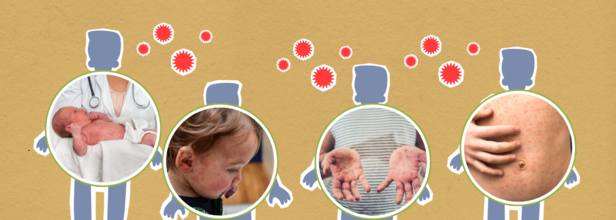- Health Conditions A-Z
- Health & Wellness
- Nutrition
- Fitness
- Health News
- Ayurveda
- Videos
- Medicine A-Z
- Parenting
- Web Stories
New Game-Changing Drug Could Bring Your 'Bad' Cholesterol Under Control; 10 Natural Hacks To Follow

Heart disease is still the number one killer worldwide, and "bad" cholesterol – or LDL (low-density lipoprotein) – is at the heart of this health epidemic. Even after decades of depending on statins to manage high cholesterol, millions still have perilously high levels of LDL. But a revolutionary combination of drugs could finally bring hope to those who are fighting to keep their heart health in check, even with standard treatment.
A new cholesterol-lowering drug is a game-changer. A new two-drug combination—obicetrapib plus ezetimibe—has proven dramatic impacts on lowering LDL cholesterol in people who have high LDL levels even after they are on statins. In a new Phase 3 clinical trial from the Cleveland Clinic, this two-drug combination delivered a staggering 49% decrease in LDL cholesterol after only 12 weeks.
The results were presented at the European Atherosclerosis Society congress in Glasgow and simultaneously published in The Lancet, lending authority to what is potentially a large change in the treatment of cardiovascular disease. The trial enrolled 407 patients with a mean age of 68, all with LDL above the American Heart Association's suggested cutoff of 70 mg/dL for patients at high risk. Even while continuing their usual cholesterol-lowering medications, only those who received the new combo pill experienced such dramatic reductions in LDL.
Dr. Ashish Sarraju, the lead author and preventive cardiologist, stressed the need for increasing choices for patients. "In patients at higher risk, you want to lower LDL as soon as possible and maintain it as long as possible," he said. For those who have already had a heart attack or stroke—or are at high risk—this therapy may provide the aggressive lowering of cholesterol that statins alone cannot provide.
Why Statins Alone Are Not Enough Any More?
Statins have been the front-line therapy for high cholesterol for many years but have their weaknesses. They are intolerable to some patients, and in others, they fail to produce the LDL falls required to avoid repeat cardiovascular events. Even high-intensity statin therapy proves inadequate in those at highest risk.
Dr. Corey Bradley of Columbia University observes, "Many people have such a high LDL they will require multiple agents to control it." That's where the obicetrapib-ezetimibe combination steps in—providing a synergistic solution for patients who have reached a wall with conventional meds.
What Makes This Drug Different?
It’s worth noting that not all drugs in the same category have shown benefits in the past. CETP inhibitors, a class of drugs that includes obicetrapib, have previously failed to demonstrate protection against heart attacks or strokes in clinical trials. However, experts remain cautiously optimistic about this new formulation.
Dr. Robert Rosenson of Mount Sinai Health System said, "Some of the drugs in this class have not prevented strokes or heart attacks. But I am hopeful cautiously." NewAmsterdam Pharma, the Dutch firm behind obicetrapib, is now carrying out additional trials to see if this drug not only reduces LDL but also major cardiovascular events.
NewAmsterdam Pharma has revealed it will sit down with the U.S. Food and Drug Administration this year to talk about regulatory avenues for approval. Assuming everything goes according to plan, the new combination may soon be accessible to millions of patients in the U.S. and internationally.
Ways to Lower Your Cholesterol Naturally
Though new drugs such as this provide a hopeful answer for at-risk patients, they don't eliminate the necessity for ongoing lifestyle changes. The CDC says that only 20% of people can control their LDL levels with lifestyle changes alone. Nevertheless, every little bit helps—particularly when used in conjunction with medication.
Low cholesterol doesn't always mean taking medication—there are potent, natural lifestyle modifications that can do wonders to your lipid profile and heart health. Below are ways you can lower bad cholesterol (LDL) and increase good cholesterol (HDL) with realistic, long-term changes:
Follow a Heart-Healthy Diet
Emphasize a diet high in soluble fiber, healthy fat, and plant foods. Eat oats, legumes, apples and berries, vegetables, and whole grains. Replace saturated fat in red meat and whole milk dairy with heart-healthy fats like those of avocados, nuts, seeds, and olive oil. Eliminate trans fats altogether—they increase LDL and decrease HDL.
Get Moving with Regular Exercise
Physical activity tends to increase good cholesterol and decrease bad cholesterol. Be as active as possible throughout the week; aim for 150 minutes of brisk walking, cycling, or swimming per week. Even small activities like taking the stairs or taking the short walk after a meal can pay off in the long run.
Maintain a Healthy Weight
Losing a few pounds will improve cholesterol levels. Being overweight helps to raise LDL levels and lower HDL. Practice mindful eating, portioning, and consistent activity to induce a calorie deficit that allows for gradual, healthy weight loss.
Quit Smoking
Smoking injures the blood vessels, decreases good cholesterol, and places one at an increased risk for heart disease. After quitting in weeks, one starts to recover in terms of HDL cholesterol, and a year later, the risk for heart disease lessens significantly.
Limit Alcohol Intake
Even if moderate drinking contributes a little positive effect on the level of HDL, more drinking raises both total cholesterol and triglycerides. If you drink, consume it in moderate amounts—limited to one alcoholic beverage per day for women and two for men.
Manage Stress Effectively
Chronic stress can indirectly influence cholesterol by encouraging unhealthy habits such as overeating or smoking. Practice stress-reducing activities such as yoga, deep breathing, meditation, or simply taking a walk in nature to promote heart health.
Select Plant Sterols and Supplements Carefully
Some plant compounds such as sterols and stanols can inhibit the absorption of cholesterol. You can get these in fortified foods and natural supplements. Always consult a healthcare professional before taking any new supplement.
The release of this new combination therapy represents a possible paradigm shift in cholesterol treatment—especially among aging populations, genetically predisposed individuals, and those with underlying cardiovascular disease. If FDA-approved and integrated into clinical practice, this combination drug may have a profound impact on reducing the global incidence of heart disease.
These whole-body, evidence-based strategies provide a map to naturally enhance cholesterol and heart health—without resorting solely to prescription drugs.
World Misophonia Awareness Day 2025: Why Misophonia Makes Everyday Sounds Feel Like An Attack—Here’s What It Does To The Brain

Credits: Health and me
You're at the dinner table and someone slurps soup, another begins tapping a pen, and your heart begins racing, your muscles lock up, and you're filled with fury you can't explain. If this sounds familiar, you're not being "too sensitive." You may be one of millions dealing with misophonia, a little-understood sensory disorder finally receiving long-overdue notice.
On July 9, World Misophonia Awareness Day, experts and advocacy groups are urging for global recognition of this condition that impacts almost 1 in 5 adults, but too often remains misunderstood or undiagnosed. Initiated by non-profit soQuiet, the day is dedicated to advancing discussion, research, and support for those whose lives are deeply affected by what the rest of us tune out—usual, ordinary sounds.
What Is Misophonia?
Misophonia, literally "sound hatred," is more than not liking noise. It's an intense, automatic emotional and physical response to certain sounds, usually created by someone else. Chew, sniffle, heavy breathing, throat clearing, even pen clicking.
These stimuli trigger strong reactions in individuals with misophonia, from annoyance, stress, and revulsion to outright panic or fury. For some, it's a single stimulus. For others, it's multiple. The psychological weight can be overwhelming, so that everyday encounters such as dining at a restaurant or working in an open office become a daily war.
And though most people write it off as being irritable or melodramatic, the science disagrees.
An increasing amount of research is revealing what's actually going on in the brains of individuals with misophonia. A 2022 study published in Frontiers in Neuroscience indicates that misophonia is potentially associated with a specific "neural signature"—unique brain pathways that are more active in perceiving sound and emotion.
In misophonics, increased interconnectivity between the sound-processing auditory cortex and the emotion-regulating limbic system may be what makes some sounds ring alarm bells. It's a brain in overdrive, responding in the same way to a throat clear or chewing noise as it would to a bodily threat.
A reflexive fight-or-flight response—hands sweat, heart throbs, and logical thinking yields to a frantic need to flee or strike out.
Why Misophonia Is Unheard And Misunderstood?
Perhaps one of the most infuriating things for people with misophonia is that others just don't get it. It doesn't help that they are invisible and their reactions are usually termed overreactions, even rudeness.
Worse still, it has the potential to overlap with or be confused with other mental illnesses such as OCD, anxiety, PTSD, or even autism spectrum disorders. That is why diagnosis becomes complicated and many suffer silently, particularly older people who might have spent decades without ever hearing the term "misophonia."
The stigma may result in isolation, strain on relationships, and depression, particularly when individuals are stuck in environments where they cannot escape to be safe from trigger sounds—such as school, work, or home mealtime.
Misophonia is not just about being uncomfortable—it's about survivability. Most with the condition report avoiding parties, leaving jobs, or having trouble with day-to-day activities just to prevent exposure to triggers. Picture wearing noise-canceling headphones just to get through your workplace. Or having every meal in solitude, because even the sound of eating is too much. In a world that's getting noisier, adaptation is a full-time profession.
How Misophonia Affects the Brain?
Misophonia's not so much about what you're hearing—it's about how your brain interprets that sound. New research indicates that individuals with misophonia exhibit heightened activity and connectivity within brain areas that handle sound processing, emotional control, and the body's defense mechanism.
One of the most important regions engaged is the anterior insular cortex, which assists you in assessing the emotional meaning of sensory input. In misophonia, this region seems to hyperreact, sending messages that something harmless—such as someone chewing—is threatening. This activates the limbic system, which controls emotion and survival reactions, placing the individual in a fight-or-flight state very quickly.
Imagine it like a smoke alarm blaring at burnt toast like it is a raging house fire. That exaggeration is what makes misophonia so debilitating. A person with misophonia has a complete body stress response when they hear a trigger sound, even though rationally, they know the sound is not harmful.
Brain imaging studies suggest this is not about overreacting by choice—it’s a neurological mismatch, where emotional and auditory systems are too tightly wired together. That’s why even brief exposure to trigger sounds can feel unbearable and linger long after the sound stops.
Common Trigger Sounds of Misophonia
Misophonia triggers are different for different people but most follow predictable patterns. They're not loud or startling noises—they're typically repetitive, mundane sounds easily tuned out by other people but for the misophonic person, which can trigger an almost immediate adrenaline rush of anger, panic, or disgust. The following are the most typical categories of trigger sounds:
Drinking and eating noises: Smacking lips, slurping, chewing, gulping, crunching, and loud swallowing are the worst. Chewing gum is a very frequent offender.
Sounds associated with breathing: Sniffling, heavy breathing, nose blowing, or snoring are common culprits. Even a faint wheeze can be offending for some.
Sounds of the mouth and throat: Throat clearing, coughing, yawning, or audible kissing sounds.
Repetitive sounds of activity: Tapping on the pen or feet, mouse clicking, typing, drumming fingers, or even paper or plastic bag rustling.
Environmental and ambient sounds: Ticking clock, ringing telephone, dripping water, or sounds of animals such as barking.
Surprisingly, several individuals comment on how the proximity or origin of the noise is important. A TV chewing noise might be mildly annoying—but if it's coming from someone sitting directly next to them, the response can be volcanic. This serves to illustrate that misophonia is not about the sound type or volume but also relationship, context, and physical proximity.
Knowing these triggers can inform treatment and coping mechanisms, particularly when seeing therapists and learning to recognize patterns and decrease emotional reactivity over time.
Is Misphonia Treatable?
Misophonia is finally being studied, understood, and treated. Cognitive Behavioral Therapy (CBT) is showing promising results. A 2020 study published in Depression and Anxiety found that more than a third of patients undergoing CBT saw a meaningful reduction in misophonia symptoms—and these improvements held up a year later.
CBT involves finding individual noise triggers and reframing the emotional response to them. It's training the brain to break the anxiety or anger spiral, not allow it to get the best of you. In extreme cases, therapy is also paired with anti-anxiety medication to decrease reactivity, particularly when CBT alone doesn't work. Other coping strategies are:
- Wearing noise-canceling headphones
- Using white noise machines or soothing background music
- Deep breathing or muscle relaxation exercises
Why is Family and Social Support Important?
For individuals with misophonia, having family members know what the condition is and what it's like makes a huge difference. Family members tend to unwittingly become trigger points—chewing at the dinner table, throat clearing, playing music out loud.
Dismissal and blame only exacerbate the emotional toll. Specialists maintain that education and compassion are essential. Accepting that the response is involuntary—and not a personal affront—is critical. Offering professional assistance and using supportive measures in the home can assist in creating safe, respectful spaces for those affected.
World Misophonia Awareness Day isn't only for patients—it's for everyone. By recognizing that some sensory stimuli can be triggering, offices, schools, and public places can start to make changes that are inclusive.
Misophonia isn't a trait, it's a real, life-changing condition that's worthy of attention and understanding. As the research expands and the stories get out there, we get closer to a world where individuals with misophonia don't merely exist—but thrive.
UK Health Officials Issue A Public Warning And Safety Guidelines Against These Bugs That Cause Lyme Disease

(Credit-Canva)
As an unexpected wave of heat hits the UK, many people have been concerned regarding not just heat-illnesses, but also other issues that arise mostly in the summer season.
The UK Health Security Agency (UKHSA) has issued a public warning against a small, almost invisible threat that could send you to the hospital. Taking simple steps can help you avoid these bugs that could leave you with flu-like symptoms lasting for weeks.
The Hidden Danger: Ticks
Ticks are small bugs often found in woods, grassy areas, and moorlands. The reason why the volume of these bugs is more prevalent in these grassy areas is because it is easier to find and feed off other creatures there. These bugs are known to spread Lyme disease, a bacterial infection. You get it when a tick bites you and feeds on your blood, which can lead to flu-like symptoms. Not all ticks carry Lyme disease, though. It's usually easier to treat if caught early, but if it goes unnoticed, problems can worsen, causing joint pain, nerve issues, and memory problems.
Lyme Disease Treatment
The chances of getting sick are fairly low, as not all ticks carry the bacteria that cause Lyme disease. If you've been bitten, keep a close eye on the bite area for symptoms, especially the well-known "bullseye" rash. This rash can appear up to three months after a bite, but usually shows up within one to four weeks.
If a doctor thinks you might have Lyme disease, they'll prescribe antibiotics. The type you get depends on your symptoms, and you might need to take them for up to 28 days. It's very important to finish the entire course, even if you start feeling better. For severe symptoms, you might be sent to a hospital specialist to receive antibiotics directly into a vein.
A small number of people who are treated for Lyme disease continue to have symptoms like tiredness, aches, and low energy for years. These symptoms are often compared to conditions like fibromyalgia and chronic fatigue syndrome.
What to Do If You're Bitten
Tick bites might not hurt at first because ticks put a numbing substance into your skin, so you might not even notice you've been bitten. If you do find a tick, it's important to take it out the right way: use fine-tipped tweezers or a special tick-removal tool, grasp the tick as close to your skin as you can, and pull it slowly upwards without squeezing it. Never try to pull it out with your fingers, as this can leave part of the tick in your skin and cause an infection. After removing the tick, clean the bite area with antiseptic or soap and water.
Simple Prevention Tips
Health officials recently shared advice on how to protect yourself from these tiny parasites. They suggest simple actions are best to prevent tick bites:
- Regular checks are your best defense. While you're outside, brush off any ticks you spot right away.
- Do another check when you get home. Focus on exposed skin and any clothes where these bugs might be clinging.
- Don't forget to check children and pets, as they can't check themselves.
- Use an insect repellent that specifically prevents ticks.
- Wear long sleeves and long trousers when outdoors to reduce direct skin contact.
- When possible, stick to clearly marked paths and avoid brushing against plants where ticks might be hiding.
Even After The Elimination Of Measles In 2000, Why Is US Struggling With It Today?

Credits: Canva
The United States is facing its worst measles outbreak in 25 years, with more than 1,270 confirmed cases reported so far this year—surpassing the previous high of 1,274 cases in 2019. The data, compiled by Johns Hopkins University, has raised alarms among health officials, who believe the actual number of infections may be even higher due to underreporting.
Tragically, three people have died from the virus this year—two children in Texas and one adult in New Mexico. All of them were unvaccinated.
“This move will further fuel the spread of vaccine-preventable illnesses,” said Dr. Bruce A. Scott, president of the American Medical Association, referencing ongoing declines in vaccination rates and policy shifts that threaten public health.
From Elimination to Outbreak
Measles is one of the most contagious diseases known and was declared eliminated in the United States in 2000, thanks to the widespread use of the MMR (measles, mumps, rubella) vaccine. However, current outbreaks suggest a reversal of that progress.
The largest outbreak this year began in January in Gaines County, West Texas—a region with one of the lowest vaccination rates in the state. So far, that outbreak alone has led to over 750 confirmed cases and has spread to neighboring areas in New Mexico and Oklahoma, with possible links to Kansas.
Shockingly, nearly one in four kindergartners in Gaines County did not receive their required MMR vaccine during the 2024–25 school year.
Spread Through Travel and Everyday Contact
Measles spreads easily through airborne droplets when an infected person coughs, sneezes, or talks. The virus can also live on surfaces like doorknobs for several hours, making it especially hard to contain.
Air travel has further complicated containment efforts. In Colorado, an out-of-state visitor unknowingly spread the virus while contagious, leading to multiple cases—including individuals who were only at the airport at the same time.
According to the CDC, nearly 1 in 8 people infected this year required hospitalization, and about 30% of all cases have been in children under the age of five. Most of these children were unvaccinated.
The Role of Vaccination
The MMR vaccine remains the most effective tool against measles. One dose offers 93% protection, while two doses provide 97% protection.
In response to the crisis, some states have taken emergency steps to protect infants. Several have lowered the age for the first MMR shot from 12 months to 6 months. The results have been encouraging—early vaccination rates among 6-month-olds in Texas are now eight times higher than in 2019.
New Mexico has also seen a significant rise in vaccination, and both states are working hard to protect their most vulnerable populations.
Still, nationwide vaccination rates remain below targets. The U.S. aims for 95% of kindergartners to receive both doses of the MMR vaccine, but this benchmark has been missed for the past four years. In the 2023–24 school year alone, over 125,000 kindergartners lacked at least one required vaccine.
A Shifting Public Health Landscape
Public health experts are concerned that growing distrust in vaccines and leadership changes at the federal level may further undermine efforts to control the disease.
As of now, the CDC does not have a permanent director in place, and U.S. Health and Human Services Secretary Robert F. Kennedy Jr.—a long-time vaccine skeptic—has made controversial decisions. Though he recently expressed support for vaccines, his previous statements and the removal of key expert panels have left public health officials worried.
If outbreaks linked to the Texas region continue into 2026, the U.S. risks losing its measles elimination status. Experts say rebuilding public trust in vaccines and boosting routine childhood immunizations must become a national priority—before the disease becomes even harder to contain.
© 2024 Bennett, Coleman & Company Limited

